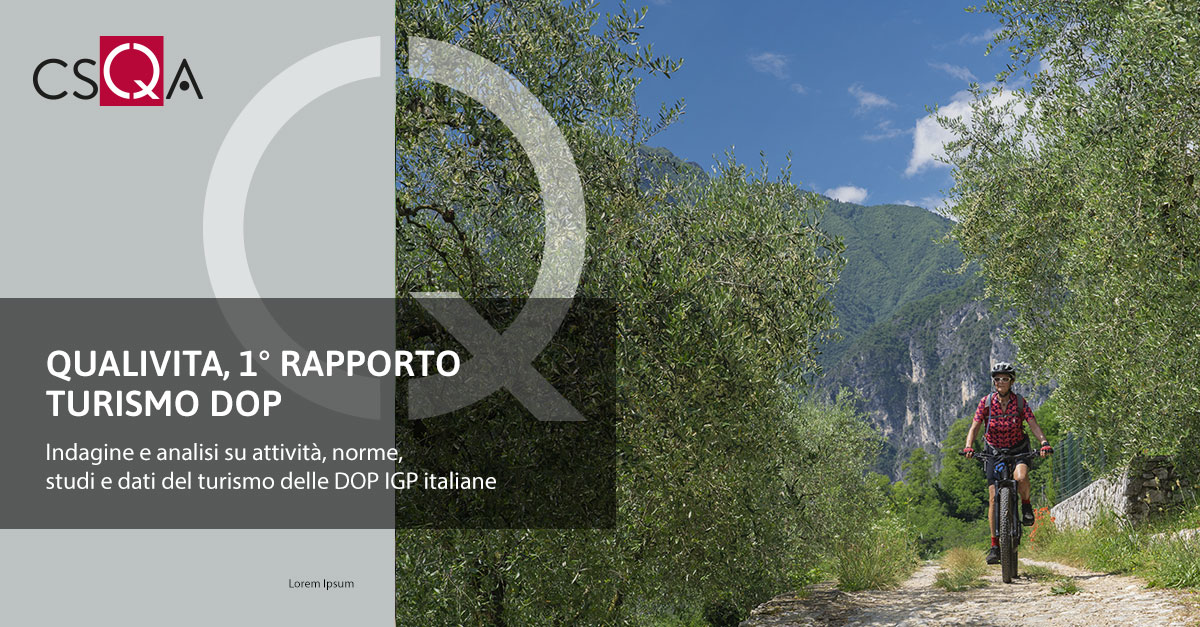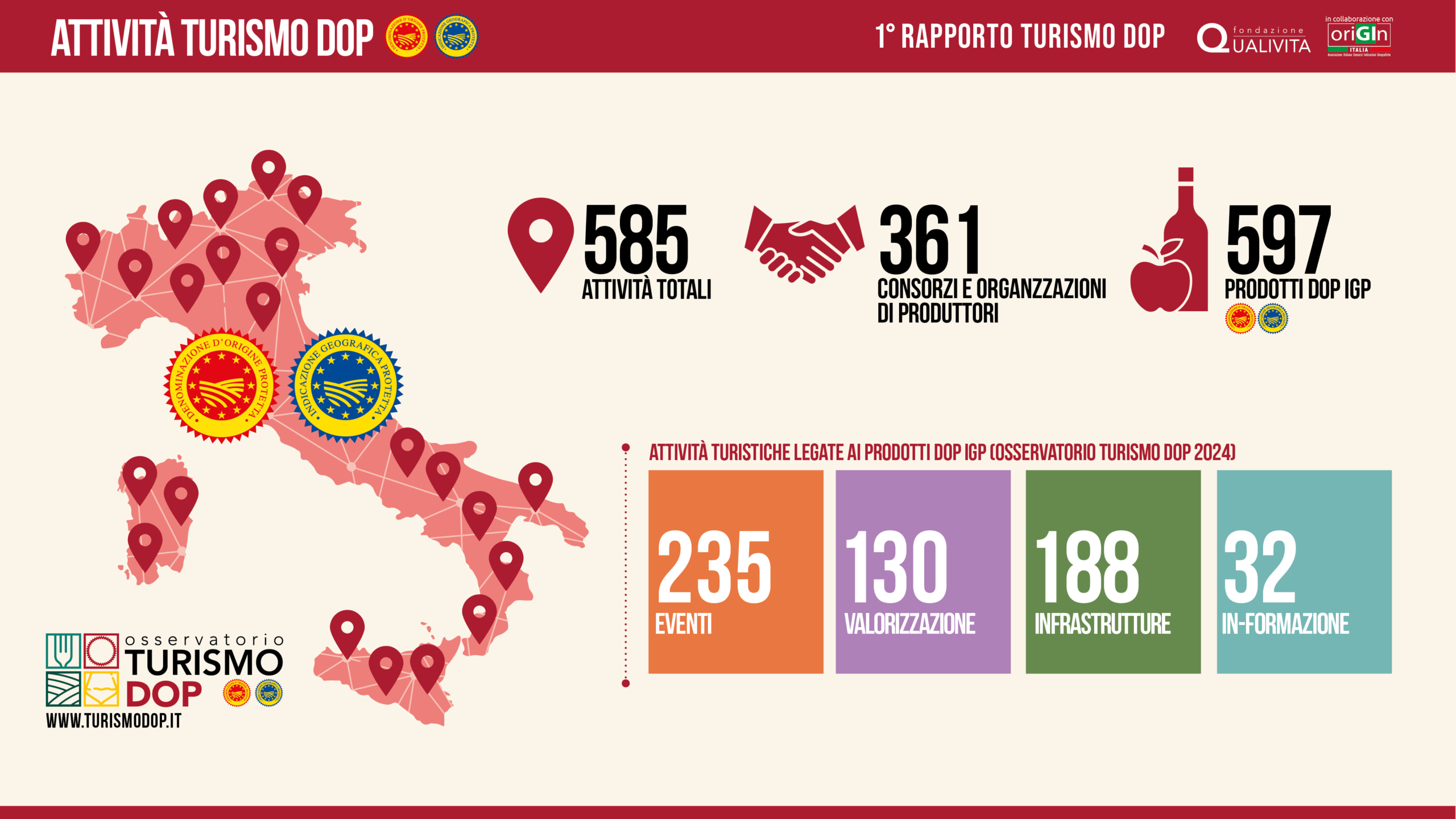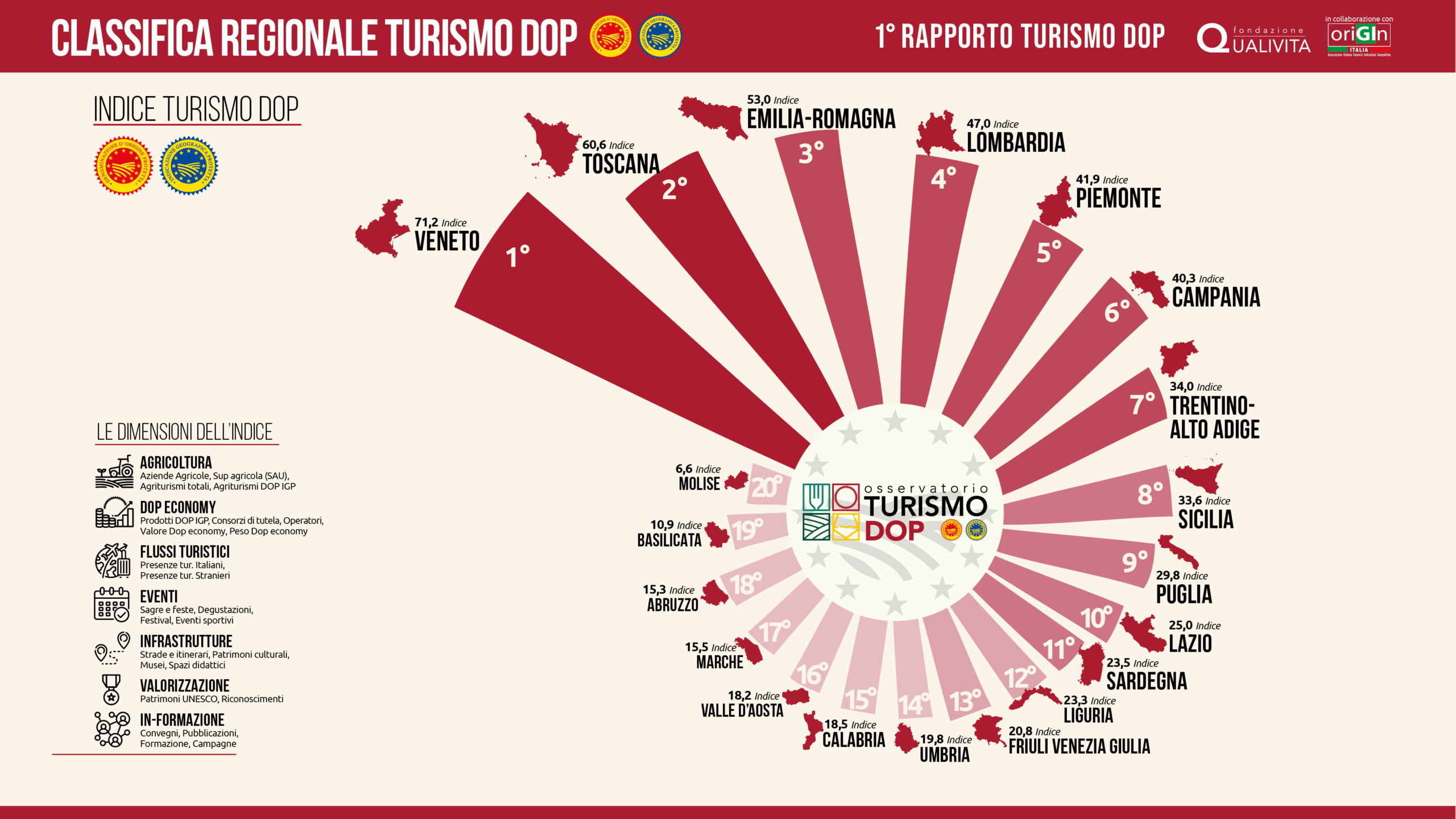 The 1st DOP Tourism Report , produced by the Qualivita Foundation in collaboration with Origin Italia and with the support of Masaf, offers an organic and updated analysis of the phenomenon, divided into four thematic areas: activities, regulations, studies and data.
The 1st DOP Tourism Report , produced by the Qualivita Foundation in collaboration with Origin Italia and with the support of Masaf, offers an organic and updated analysis of the phenomenon, divided into four thematic areas: activities, regulations, studies and data.It also includes a comparative summary and a regional ranking of DOP Tourism in Italy.
An identity-based tourism model
DOP Tourism represents a new frontier in food and wine tourism.A model that places Geographical Indications at the centre as tools for generating authentic, educational and sustainable experiences .
An increasingly widespread phenomenon in Italy, DOP Tourism is not just a set of “themed” initiatives, but represents an integrated hospitality system built around the DOP and IGP supply chains , under the direction of the Protection Consortia , in line with the new EU Regulation 2024/1143 which also assigns them the responsibility for “the development of tourist services in the relevant geographical area”.
A tourist offer that tells the true Italy, with experiences contextualized in the landscape, history and traditions of local communities and guaranteeing quality, identity and connection with the territory.
The 1st DOP Tourism Report

Based on direct investigations and the examination of institutional sources, the 1st Report on DOP Tourism offers an updated and organic analysis of tourism linked to Geographical Indications in Italy.
With 585 activities – promoted by 361 Protection Consortia and involving 597 DOP IGP products –, 87 reference regulations , as well as a selection of the main scientific studies and sector data, the report outlines a complete picture of the phenomenon at national and local level.
The 235 events recorded in 2024 confirm themselves as the most dynamic area of DOP Tourism, with consolidated initiatives such as Open Dairies or guided tastings in the cellar, together with new proposals such as cultural festivals and sporting events linked to DOP IGP products and territories.
188 permanent infrastructures have been added, which are essential for offering immersive and long-lasting experiences linked to GI products: Wine and flavour routes - recognised by the Regions - food museums, educational spaces and accessible cultural heritage , which testify to the deep historical and cultural link between GIs and their places of origin.
The report also maps 130 elements of Valorisation, official recognitions of the areas of origin of DOP and IGP products:
- UNESCO heritage sites (such as the Prosecco Hills of Valdobbiadene and Conegliano or the art of dry stone walls),
- Historic rural landscapes recognized by Masaf,
- regional and national parks managed by the Ministry of the Environment which represent the interconnection between productive excellence and environmental value.
The case studies
The Report also contains the analysis of 41 case histories of activities considered a model in their field, including: Parma Ham Consortium, Garda DOP Oil Protection Consortium, Modica Chocolate Protection Consortium, Parmigiano Reggiano Cheese Consortium, Prosecco DOC Protection Consortium, Vesuvio Wine Protection Consortium, Roccaverano DOP Cheese Protection Consortium, Grana Padano Protection Consortium, Conegliano Valdobbiadene Prosecco Superiore Wine Protection Consortium, Riviera Ligure DOP Oil Protection Consortium, Franciacorta Protection Consortium, Mozzarella di Bufala Campana DOP Protection Consortium, Asiago Cheese Protection Consortium, Modena Balsamic Vinegar Protection Consortium.The website
On the occasion of the publication of the Report, the new version of the website www.turismodop.it was also released, which collects in an updated and in-depth way all the contents of the Observatory: activity sheets, reference regulations, data and scientific research in the sector, but also interactive maps, research tools and a selection of updated news.Regional ranking of DOP tourism
Veneto, Tuscany, Emilia-Romagna and Lombardy are positioned at the top of DOP Tourism thanks to a winning mix: the presence of solid production chains, consolidated tourist attractiveness and, above all, structured and recognized protection Consortia capable of playing an active role in territorial governance. This ability to bring together local actors, promote shared projects and activate concrete synergies makes the difference in the development of an authentic, integrated and sustainable tourist offer.
The regional ranking should therefore not be interpreted as a simple ranking, but as a useful tool for identifying replicable models and strengthening public policies.
Even the territories with less structural weight have demonstrated that, with vision, coordination and networking ability, it is possible to activate effective local development paths.